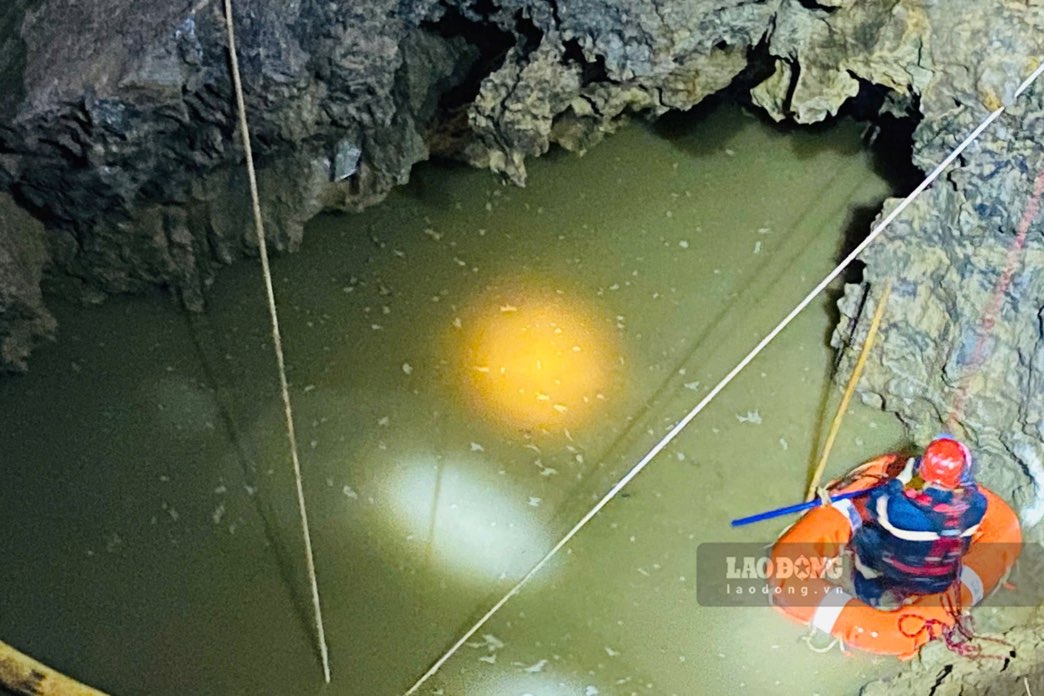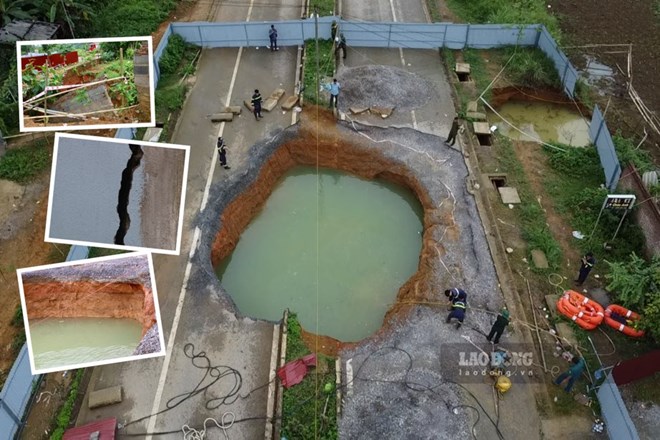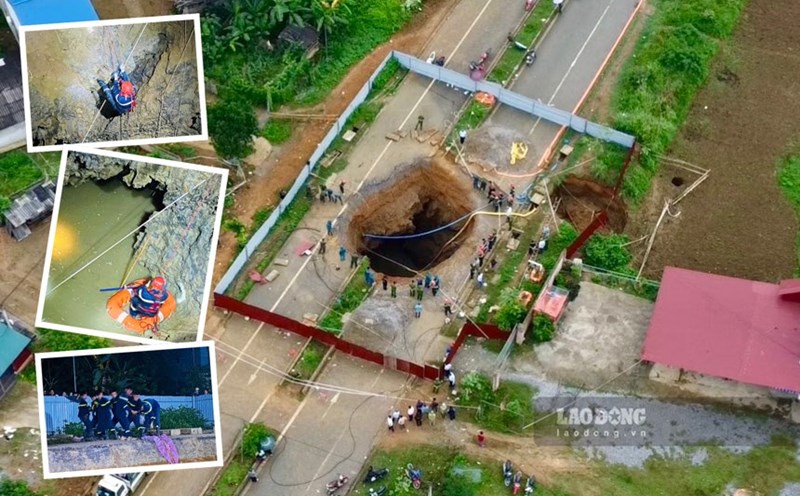From March 2025 to now, in Kim Lu commune (Na Ri, Bac Kan), 9 subsidence locations have appeared, of which 6 "death holes" have been formed, the rest are 3 areas with signs of subsidence.
In particular, there is a drop on Highway 3B with a length of about 7m, 5m deep in the middle of the median. However, then the hole gradually, 8.6m long, 8.5m wide, average 8m deep. At the bottom of the subsidence, there is a groundwater and a 5.3m deep frog. The locality has poured nearly 200m3 of rocks into the pit to fill, but the entire block of rock has disappeared after one night, leaving no trace.
According to the leader of Kim Lu commune, during the drainage process, a large rock nearly the size of a car was suddenly swept away to the bottom of the hole and went missing.


Sharing with Lao Dong, Mr. Nguyen Dai Trung - Doctor of Geology, Institute of Geological Sciences and Mineral Resources, to thoroughly and safely handle the underground cave system, it is necessary to carefully survey the underground cave system before taking any intervention measures. If we cannot determine the length, width, and depth, we will continue to pump cement or dump soil into the water and it will be lost, Dr. Nguyen Dai Trung stated.
Mr. Trung also emphasized that the current filling measures are quite expensive, but in terms of effectiveness, they are not guaranteed. In the long term, experts recommend that it is necessary to conduct a comprehensive plan for limestone areas, especially in places where there are activities to build people's livelihoods, transportation or tourism. These areas often have flat valley terrain, favorable for development but also have many potential risks if there is no careful geological assessment.
To thoroughly handle and avoid future risks, the first thing is to study geological characteristics and factors that can cause subsidence such as rain, geological structure, and soil and rock composition. It is necessary to carefully explore and survey the Karst system to assess the situation, thereby being able to develop safe and appropriate handling measures.
In addition, to maximize the development of limestone areas that are both sustainable and safe, it is necessary to educate knowledge, disseminate and propagate appropriate response scenarios to people as well as authorities at all levels.
At the same time, it is necessary to limit the massive development in the limestone area to avoid increasing the amount of water supply to the people and tourism, the amount of domestic water increases, the amount of waste increases, the amount of CO2 emitted increases. These are the conditions that can "die", clogged caves, causing the phenomenon of land loss, impact on the stable conditions of the ground. The pile of the foundation or excavation has an impact on the stability of the area.
Handling subsidence needs to start with a clear understanding of the structure of the land, controlling resource exploitation and development planning in accordance with specific geology. Only when proactive from the root, can the safety of the community and sustainable development in terrain such as limestone areas be ensured.









